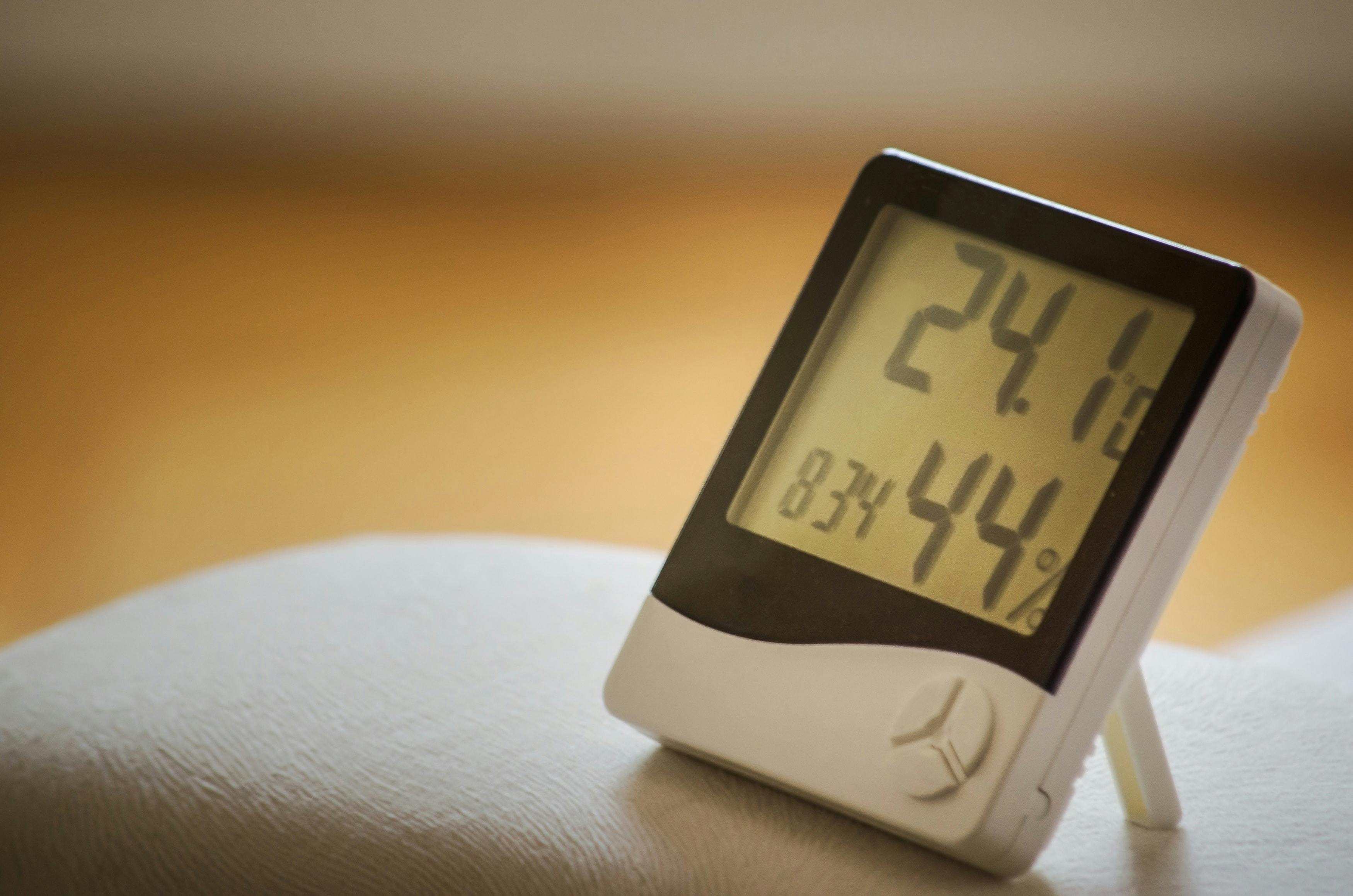First published on Friday, Jul 09, 2021
Last updated on Friday, Mar 18, 2022
As an employer, you’re responsible for providing a comfortable and safe work environment for your staff.
The law requires you to complete a risk assessment of the area to highlight any potential hazards. Depending on the time of year you complete that assessment, there some hazards you could miss.
In the height of summer, heat can present a significant risk to your workers. Equally, the cold of winter can slow down your staff too. And this can be worsened by temperature changes caused by machinery being used.
It’s vital that you consider the temperature of your work environment and take steps to keep your team safe.
In this article, we’ll cover the recommended working temperatures for indoor and outdoor work, what the law says, and the health risks of heat and cold for your staff.
What temperature can you stop working in the UK?
There are no legal working temperatures in the UK.
The HSE Approved Code of Practice suggests the minimum temperature but there’s no penalty if you don’t follow these guidelines.
This is because it’s not practical to impose temperature limits in many industries. For example, it can get very hot in factories, and there’s no way to fairly make rules for such a variety of industries.
However, employers must follow the health & safety law to ensure the working temperature is comfortable.
Minimum working temperature in the UK
The HSE recommends 16ºC as the minimum temperature for working, or 13ºC if the work involves rigorous physical effort.
These aren’t legal requirements but sticking to them will ensure your workers are comfortable and productive.
Maximum working temperature in the UK
Some work environments can become extremely hot because of the work being performed and equipment being used. Radiant heat from machines, as well as air speed and humidity make it difficult to get an accurate reading of air temperature.
Because of this, there’s no maximum working temperature in the UK. The HSE Approved Code of Practice doesn’t recommend a higher limit either.
Trade Union Congress (TUC) have been pressing for the introduction of a max working temperature in the UK since 2009. They set out a plan where employers are required to take action once the temperature reaches 24ºC and leave work if it exceeds 30ºC.
Despite the lack of absolute limits, employers are required to provide a reasonable working temperature.
What is a reasonable working temperature?
Although there is no legal working temperature, the Workplace (Health, Safety and Welfare) Regulations 1992 states that employers must provide a “reasonable” temperature in the workplace.
This takes into account that the temperature can be affected by the work environment and type of work being done. But doesn’t advise employers on what a reasonable temperature is.
To add to the confusion, the World Health Organization minimum temperature to work of 18ºC is slightly different to the HSE’s 16ºC, and both are lower than the standard room temperature definition of 21ºC.
There’s also recommendations for specific types of work environments. The Chartered Institute of Building Services Engineers (CIBSE) recommends:
- 16ºC for factory temperature.
- 18ºC for hospital temperature.
- 20ºC for office temperature.
They also state that heavy work in factories may be comfortable at 13ºC, and very sedentary work may be okay at around 24ºC.
As long as you stick to a safe working temperature, it’s up to you to set the thermostat. But remember that your staff might have different preferences, and you should try to accommodate them.
Outdoor Working Temperature Regulations
As with indoor working, there are no specific working temperature laws for working outside. Although, it’s likely your risk assessment will highlight requirements you won’t need for indoor work.
In cold environments, that might include:
- Providing the correct personal protective equipment (PPE).
- Encouraging regular rest breaks.
- Training workers about the dangers of cold stress.
In warmer environments, consider:
- Encouraging regular rest breaks.
- Providing free access to cool drinking water and shaded areas.
- Rescheduling work to cooler times of the day, if possible.
- Providing training about the symptoms of heat stress.
The working conditions and temperature will impact which steps you need to take. No matter whether it’s hot or cold, you need to make sure your staff understand the health risks.
The health risks of incorrect working temperature
There’s more to finding the right work temperature than just making sure everyone is comfortable and productive. Too much exposure to heat or cold can have serious consequences for your worker’s health.
Too much cold can cause chilblains, Raynaud’s disease or even frostbite. This can lead to permanent damage.
Too much heat can cause exhaustion, tiredness, and loss of concentration — which increases the risk of accidents. Heat exhaustion and heatstroke can also occur after prolonged time working in high temperatures.
For outdoor workers, there is also a risk of sun exposure which can cause sunburn, and increase the risk of developing skin cancer.
You should also consider that some individuals will be at a greater risk of adverse effects. For example, workers with conditions, like heart and kidney disease or asthma, will be more at risk.
Get help with defining your work temperature with BrightHR
Although there is no legal temperature to work in the UK, you’re required to ensure your workplace is a comfortable and safe place for your staff.
You’re required to complete a thorough risk assessment of your workplace, and it’s vital that you consider the temperature at all times of year. Failing to do so and provide solutions in cases of extreme cold or heat could be a breach of health & safety law.
Get complete health & safety support with BrightSafe. Our smart online software will help you to make risk assessments and allow your staff to access CPD-accredited e-learning courses. Plus, get answers to urgent health & safety queries with BrightSafe Advice.
Book a free demo today to see how easy it is to manage health & safety with BrightSafe. Give us a call on 0800 783 2806.








